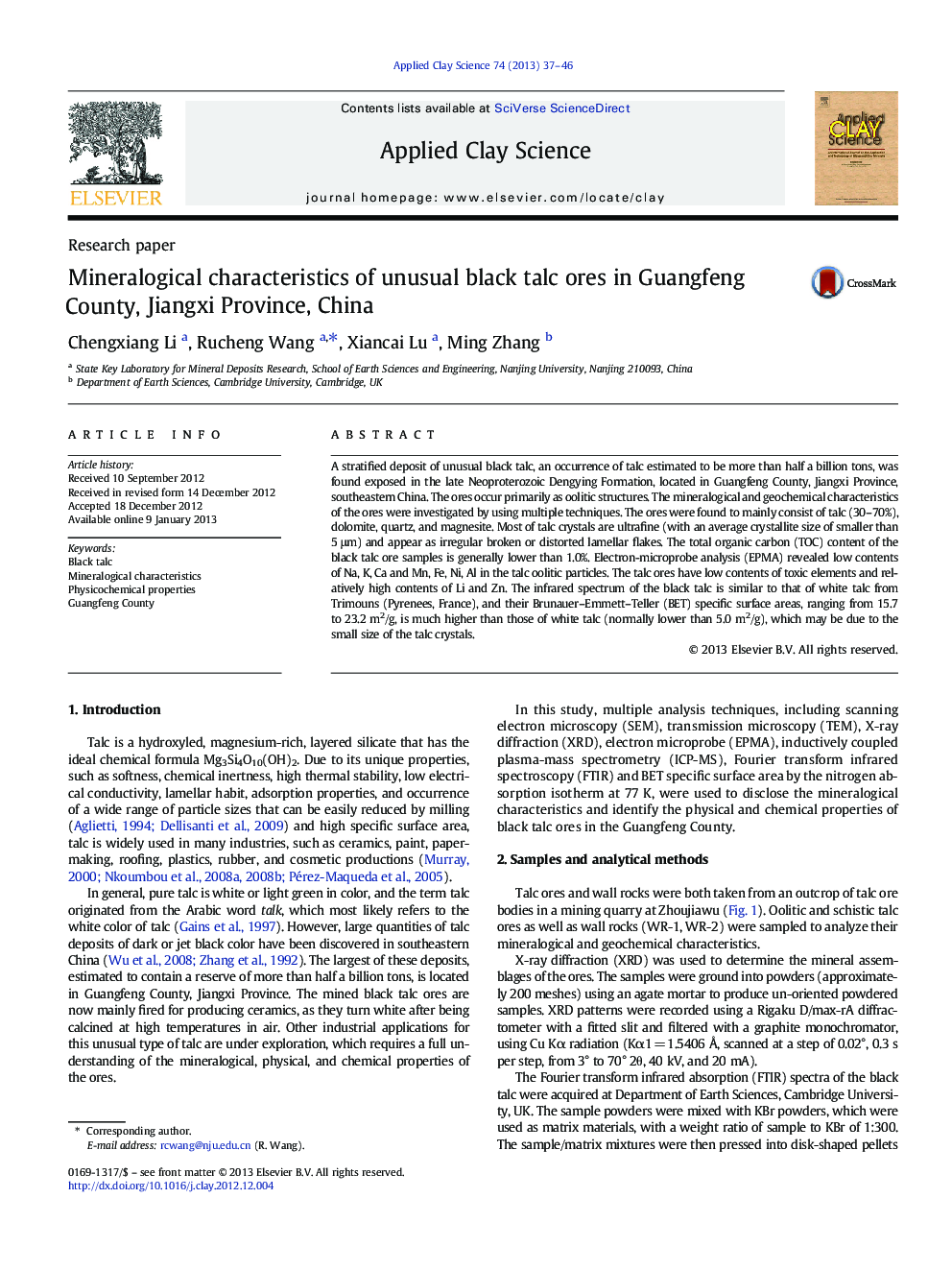| Article ID | Journal | Published Year | Pages | File Type |
|---|---|---|---|---|
| 1695056 | Applied Clay Science | 2013 | 10 Pages |
A stratified deposit of unusual black talc, an occurrence of talc estimated to be more than half a billion tons, was found exposed in the late Neoproterozoic Dengying Formation, located in Guangfeng County, Jiangxi Province, southeastern China. The ores occur primarily as oolitic structures. The mineralogical and geochemical characteristics of the ores were investigated by using multiple techniques. The ores were found to mainly consist of talc (30–70%), dolomite, quartz, and magnesite. Most of talc crystals are ultrafine (with an average crystallite size of smaller than 5 μm) and appear as irregular broken or distorted lamellar flakes. The total organic carbon (TOC) content of the black talc ore samples is generally lower than 1.0%. Electron-microprobe analysis (EPMA) revealed low contents of Na, K, Ca and Mn, Fe, Ni, Al in the talc oolitic particles. The talc ores have low contents of toxic elements and relatively high contents of Li and Zn. The infrared spectrum of the black talc is similar to that of white talc from Trimouns (Pyrenees, France), and their Brunauer–Emmett–Teller (BET) specific surface areas, ranging from 15.7 to 23.2 m2/g, is much higher than those of white talc (normally lower than 5.0 m2/g), which may be due to the small size of the talc crystals.
► We report black talc deposits with huge reserves in Guangfeng County, China. ► Its mineralogical characteristics and physicochemical properties are revealed. ► When heated in air, the black talc turns white. ► The black talc can be of great value to many industries.
